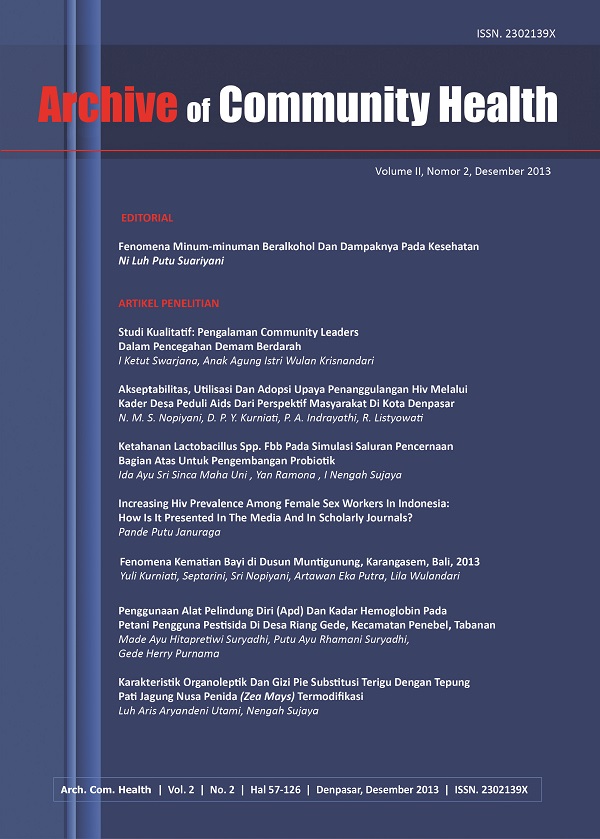INCREASING HIV PREVALENCE AMONG FEMALE SEX WORKERS IN INDONESIA: HOW IS IT PRESENTED IN THE MEDIA AND SCHOLARLY JOURNALS?
Abstract
Within different target audiences, the media and scholarly journals have significant roles in enhancing the awareness and influencing the development of HIV prevention-related policies. However, particularly in developing and poor countries, the media seem to affect policy development in contradictory ways. Thus, it is interesting to investigate how the increase in prevalence of HIV among female sex workers (FSWs) in Indonesia is represented in the media and to make a comparison of this representation with those in scholarly articles. Using three types of newspaper and peer-reviewed scholarly articles, this paper found that the media tend to frame the problem and its risk factors as merely a health problem produced by unsafe behaviours that are inappropriate to the local culture and belief. Efforts to challenge dominant values through the involvement of local media should encourage local journalists aware of the consequences of their chosen media template. Furthermore, given the fact that the majority of scholarly articles included in the analysis focused more on biological and behavioural factors of HIV infection, more social research is needed.Downloads
Download data is not yet available.
How to Cite
JANURAGA, Pande Putu.
INCREASING HIV PREVALENCE AMONG FEMALE SEX WORKERS IN INDONESIA: HOW IS IT PRESENTED IN THE MEDIA AND SCHOLARLY JOURNALS?.
ARCHIVE OF COMMUNITY HEALTH, [S.l.], v. 2, n. 2, p. 94-103, dec. 2013.
ISSN 2527-3620.
Available at: <https://ojs.unud.ac.id/index.php/ach/article/view/12443>. Date accessed: 10 jan. 2026.
Section
Articles
Keywords
media, HIV, and policy














